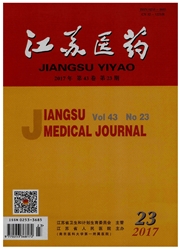

 中文摘要:
中文摘要:
目的观测胰岛素转录调控因子PDX-1、NeuroD1及MafA对小鼠骨髓间充质干细胞(mMSC)分化为胰岛素分泌细胞的作用。方法分离培养扩增mMSC,全基因合成转录因子PDX-1、NeuroDl和MafA的碱基序列,构建含目的基因的腺病毒载体并转染293A细胞包装成功后,分别或联合感染mMSC,体外培养分化后反转录聚合酶链反应(RT.PCR)检测胰岛素基因的转录,免疫荧光鉴定胰岛素蛋白表达,ELISA检测细胞上清液胰岛素的分泌情况。结果成功构建分别含目的基因的3种腺病毒载体,导入转录调控因子的mMSC启动胰岛素基因转录,体外培养分化后可见胞质内有胰岛素合成,3种转录因子联合作用的mMSC经葡萄糖刺激后培养液上清胰岛素浓度为(112.84±9.67)mU/L,而未受染mMSC细胞上清液为(1.60±0.22)mU/L,二组比较差异有统计学意义(P〈0.05)。结论转录因子PDX-1、NeuroD1和MafA修饰的mMSC能启动内源性胰岛素基因转录,获得显著产胰岛素功能。
 英文摘要:
英文摘要:
Objective To evaluate the effects of insulin gene transcription regulators PDX-1, NeuroD1 and MafA on the differentiation of bone marrow mesenchymal stem cells (mMSCs) into insulin- producing cells. Methods Murine mMSCs were isolated, cultured and expanded. The base sequences of transcription factors PDX-1, NeuroD1 and MafA were obtained by total gene synthesis and the recombinant adenovirus vectors harboring target genes constructed and transfected into packaging cell line 293A. mMSCs were infected with adenovirus separately or together, and then differentiated in vitro into insulin-producing cells. Reverse transcription-polymerase chain reaction (RT-PCR) was utilized to detect insulin gene expression, immunofluorescence for identifying the presence of insulin protein and insulin enzyme-linked immunosorbent assay (ELISA) for evaluating the secretory volume of insulin. Results The differentiation extent of mMSCs into G-cell was analyzed. The G-cell-specific transcriptional regulators and insulin gene were expressed in mMSCs after transfection. Immunofluorescent analyses revealed the activated expression of insulin in the cytoplasm of differentiated cells. A significant content of insulin was released in these cells in response to a certain concentrations of glucose stimulation. The insulin content of mMSCs infected with a combination of three transcription factors was significantly higher than that of the control group [ ( 112. 84± 9. 67 ) mU/L vs ( 1.60 ± 0. 22) mU/L, P 〈 0. 05 ]. Conclusion After modification by transcriptional factors PDX-1, NeuroD1 and MafA, mMSCs can secrete insulin through starting endogenous insulin gene transcription.
 同期刊论文项目
同期刊论文项目
 同项目期刊论文
同项目期刊论文
 Comparing the Reprogramming Efficiency of Mouse Embryonic Fibroblasts, Mouse Bone Marrow Mesenchymal
Comparing the Reprogramming Efficiency of Mouse Embryonic Fibroblasts, Mouse Bone Marrow Mesenchymal 期刊信息
期刊信息
